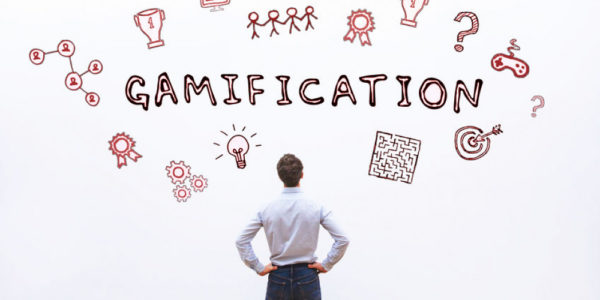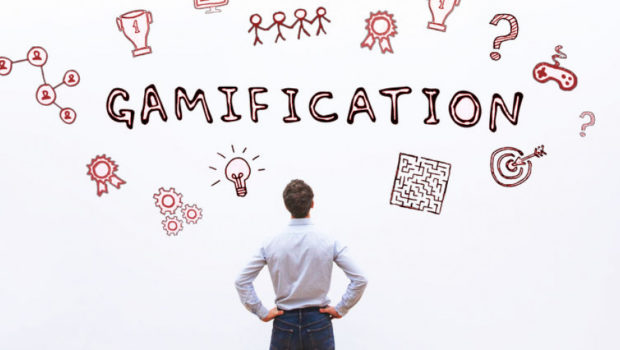How Gamification Can Improve User Engagement
Growing and keeping your customers engaged can be a tricky task. In a survey carried out by Convero, 58% of businesses didn’t have an operative formal customer engagement program. While 60% did not have an idea of the number of customers, they had lost over the past year. However, by using gamification strategies, you can build an active and engaging customer program.
What is Gamification?
You know those game elements, like trivia, rewards, funny characters, etc. that pop while you’re online? They are known as gamification. What they do is to encourage users to stay much longer on your digital platform. It isn’t far fetched from the fact that most people are inclined towards playing games on their mobile devices. Thus, it would help if you watched your users closely to find out what motivates them to stay on any app or website. Then, you can create challenges and rewards to acquire, retain, and improve user engagement.

So if you need a valid reason to keep your users much longer on your business platform, keep reading. In this article, we’ll consider how you can leverage gamification to improve user engagement.
Use Games to Educate and Know Customers Needs
Take, for example, if you run an essay writing service review website like Best Writer Online. And you are looking for ways to get new customers to subscribe to your writing services. Instead of putting up adverts on how your writing services are the best and different, you can create a free online game. The game can challenge users using grammar or essay structure trivia.
From the results, you get to know their writing struggles and offer solution-based services. The games can also include relevant advice and writing tips. Thus, users learn more about your services while they’re playing. Furthermore, to encourage user engagement, you can give discounts or a free service for winning the game.
Use Contests, Giveaways, and Rewards
To attract new customers, and encourage customer retention, offer them a first-time buyer reward. An excellent gamification strategy could be to provide a free product or service. However, the catch will be that the customer first needs to refer two new users to your business.
Alternatively, you can ask users to sign up or join your list and get a 5 to 15% discount on their first order. You can likewise attract new customers by holding contests or sweepstakes. These should require that the entrants provide their details to enable them to participate. This way, you also gather data and keep the engagements flowing.
Encourage Users to Challenge Family and Friends
It is fun competing with strangers online, but it’s even more fun when you’re competing with friends or family. An excellent way to get users to bring their family and friends onboard is through gamification. You can create two or more player games.
So it’s easy for the user to rope in a friend and have them invested in your brand. It will also help you to establish a brand-oriented community. The customers within the community are more than just mere buyers. They are a group of customers with similar traits that represent your brand values. These brand communities help create brand awareness. And they increase customer discovery and foster brand loyalty. Additionally, they are an excellent source for data collection, networking, and user-generated content.
Reward Customers to Shop and Earn Points
Another way to use gamification for customer retention is by offering big-prize items. For example, an all-expense-paid trip, a brand new car, or cash prizes. It will encourage customers to keep buying and increase the chances of winning the prize. Customers can gain more points with each purchase they make. Until they can gather enough to qualify them for the significant award.
An example of a brand that does this is Rebook. Subscribers can gain points for each interaction and transaction they make. The more the points accumulate so also will the value of the rewards. These big-reward prices could go as far as giving users access to Rebook partner events and product releases.
Create Easy to Play and Winnable Games
If you want to maintain active user engagement, your games need to be winnable and straightforward. Gamification will only keep your customers engaged if they know there’s a chance to get something in return. A classic example of a brand with a successful easy to play game strategy is McDonald’s. Their gamification concept was derived from the classic game of Monopoly. And the promo dates as far back as 1987.
When customers purchase certain products from McDonald’s, they receive tickets. Each of these tickets represents a piece on the monopoly game board. The catch is to collect all the pieces in one color, and you’re eligible for a prize. Such simple games are efficient, and you can market them broadly. They can help with keeping your existing customers engaged and reactivating lapsed customers.
Create Mobile and Social Media Friendly Games
The number of mobile phones and social media users globally stands at 3.6 billion and 5.15 billion. Therefore, it is plain to see that your gamification campaigns should be mobile and social media-friendly. You can create “text code to win” games or link text messages to websites for promos.
Furthermore, incorporating social-sharing to your branded games can improve business social media presence. When customers play these games, they tend to share their results using social media. For example, paper writing services reviews site like Online Writers Rating. They create proposal writing quizzes and ask subscribers to share their results on social media.
Also, the subscriber can tag the brand’s social media handles when sharing their results. Sharing via multiple social platforms increases brand awareness among potential customers. It could also help to expand your target market. And it is a cheaper and less time-consuming method of gaining customers.
Conclusion
When done correctly, gamification activates customer interaction with your brand. Thus, you’ll need to make use of games that interest and motivates the customers. They should also be easy to use and have rewards that will keep the customer engaged.
With more customer engagements, you can build your brand community. And align customer behavior with your organization’s values. Also, it improves customer retention and increases loyalty. With such interaction, make a lot of difference in achieving your business goals.















